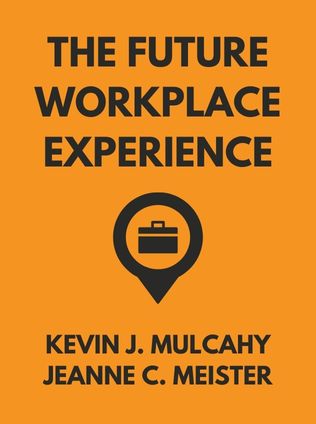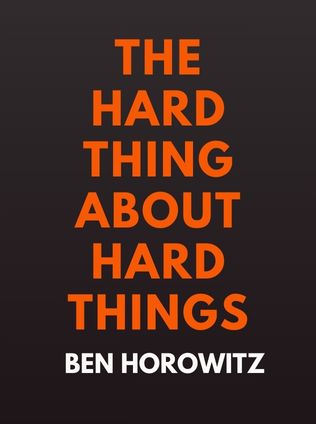
The Future Workplace Experience
10 Rules for Mastering Disruption in Recruiting and Engaging Employees
By Kevin J. Mulcahy, Jeanne C. Meister
Published 11/2016
About the Author
Jeanne C. Meister and Kevin J. Mulcahy are the co-authors of "The Future Workplace Experience." Jeanne C. Meister is a recognized expert in workplace learning and is a founding partner of Future Workplace, a consulting firm that assists organizations in rethinking and reimagining the future of work. She is also an acclaimed author and speaker on the topics of workplace trends and workforce development. Kevin J. Mulcahy, a partner at Future Workplace, is a frequent speaker and workshop facilitator on future workplace trends and entrepreneurial thinking. He also serves as an adjunct lecturer at Babson College and as an executive coach at Harvard Business School. Together, they bring a wealth of experience and insight into how organizations can navigate the rapidly changing landscape of the modern workplace.
Main Idea
"The Future Workplace Experience" provides a strategic guide to navigating the disruptive changes facing today's workplaces. The book presents ten essential rules for rethinking, reimagining, and reinventing the workplace to better recruit, engage, and retain employees. It emphasizes the need for organizations to adapt to the evolving expectations of workers, driven by technological advancements, demographic shifts, and the gig economy. By focusing on creating a seamless and engaging employee experience, companies can foster a culture that aligns with their core values and supports long-term success. The book underscores that the future of work requires an integrated approach, blending technology, culture, and physical space to create an environment where employees thrive.
Table of Contents
- Introduction
- Part I: What Workers Expect From Work
- Part II: How Technology Transforms the Workplace
- Part III: The Changing Composition of the Workplace
- Conclusion
Part I: What Workers Expect From Work
The first part of the book explores the changing expectations of workers in the modern workplace. Meister and Mulcahy highlight that employees, regardless of generation, approach their jobs with a consumer mindset. This shift is driven by the pervasiveness of technology and the on-demand economy, leading employees to expect work experiences similar to their personal consumer experiences. The authors argue that organizations must intentionally design the workplace experience to meet these expectations, integrating emotional, intellectual, physical, technological, and cultural elements.
Rule #1: Make the Workplace an Experience
To attract and retain talent, organizations must create an engaging and seamless experience for employees. This includes not only the physical environment but also the emotional and intellectual engagement of the workforce. The workplace experience should mirror the best aspects of consumer experiences, where every interaction is designed to delight and satisfy.
- Emotional experience: Companies should be purpose-driven and align their mission with the core values that resonate with employees. This helps create a sense of belonging and motivation among the workforce. For example, a company committed to sustainability can instill pride in its employees by promoting eco-friendly practices and products.
- Intellectual experience: Engaged employees are lifelong learners who seek opportunities for continuous development. Companies can support this by providing access to learning resources and encouraging a culture of curiosity and growth. Qualcomm's Employee App Store, which offers a variety of apps for learning and wellness, is an excellent example of supporting intellectual engagement.
- Physical experience: The physical workspace should be designed to offer flexibility and choice, allowing employees to select environments that best suit their tasks, whether for focused work or collaboration. For instance, companies like Google and Apple have created innovative workspaces that include open-plan offices, quiet zones, and collaborative spaces.
- Technological experience: The integration of advanced technologies, such as cognitive computing and smart devices, can enhance productivity and engagement by providing tools that support efficient work processes. IBM's use of cognitive technologies to transform its performance management system is a prime example of leveraging technology for employee engagement.
- Cultural experience: A transparent and inclusive culture is crucial for employee engagement. Companies should foster an environment where employees feel valued and heard, and where diversity of thought is encouraged. At Airbnb, for example, transparency is a key cultural value, and employees are encouraged to share their thoughts and feedback openly.
"The essence of the future workplace experience is to integrate all the elements of work into one seamless experience for the employee." — Jeanne C. Meister
By creating a workplace that mirrors the best aspects of consumer experiences, organizations can foster a more engaged and committed workforce. This holistic approach to employee experience is not just about providing a comfortable office space but also about aligning the work environment with the values and expectations of the employees. The goal is to create a work experience that employees find meaningful, engaging, and supportive, ultimately leading to higher productivity and retention.
Rule #2: Use Space to Promote Culture
The physical design of the workplace is a powerful tool for reinforcing company culture and values. Meister and Mulcahy explain that the workspace should reflect the company's identity and support its strategic goals. For instance, a company that values innovation and creativity might design open, collaborative spaces that encourage spontaneous interactions and idea-sharing. The authors emphasize that the physical environment is not just a backdrop for work but a critical component of the overall work experience.
Sign up for FREE and get access to 1,400+ books summaries.
You May Also Like
The Lean Startup
How Today's Entrepreneurs Use Continuous Innovation to Create Radically Successful Businesses
By Eric RiesWho Moved My Cheese?
An Amazing Way to Deal with Change in Your Work and in Your Life
By Spencer Johnson, M.D.Make Your Bed
Little Things That Can Change Your Life...And Maybe the World
By William H. McRavenThe Ride of a Lifetime
Lessons Learned from 15 Years as CEO of the Walt Disney Company
By Robert IgerThe Hard Thing About Hard Things
Building a Business When There Are No Easy Answers
By Ben Horowitz



















